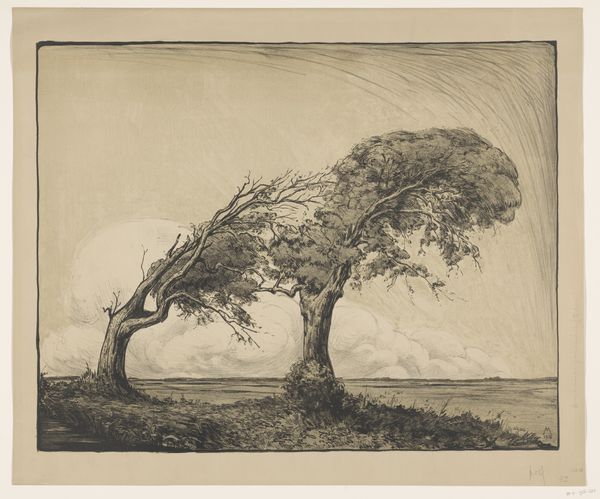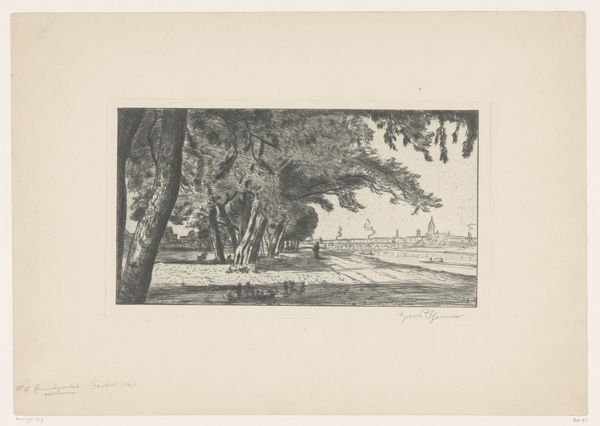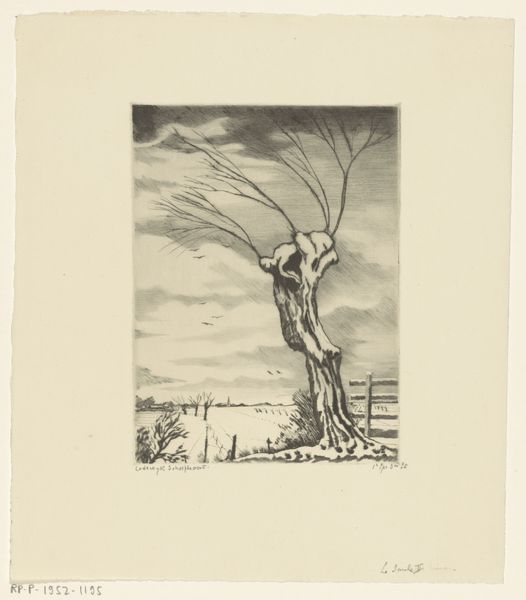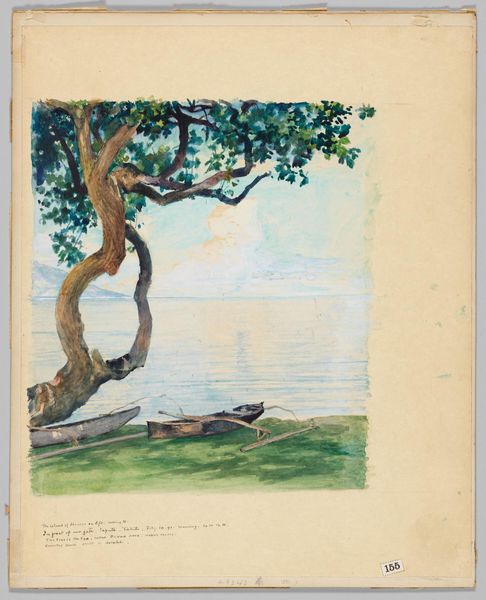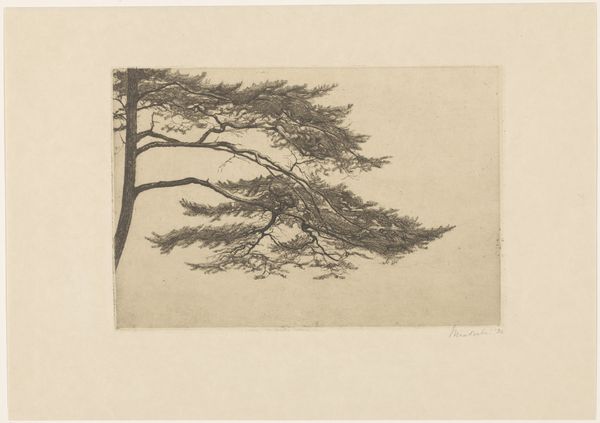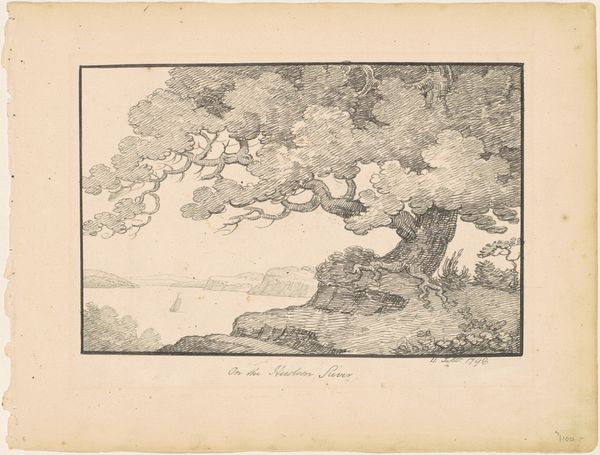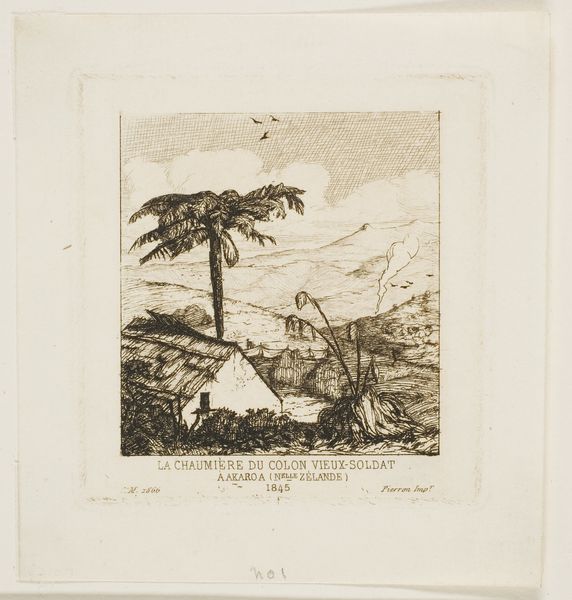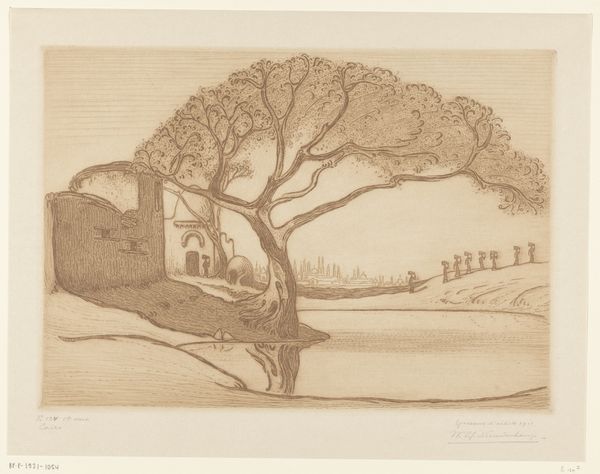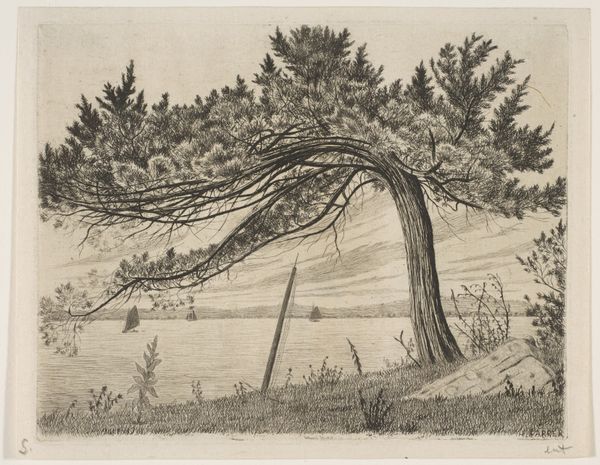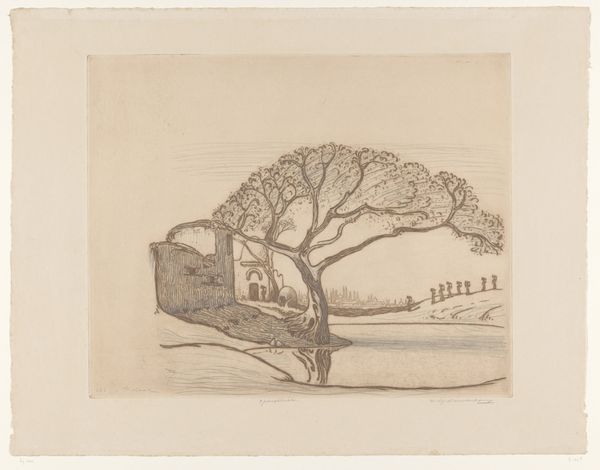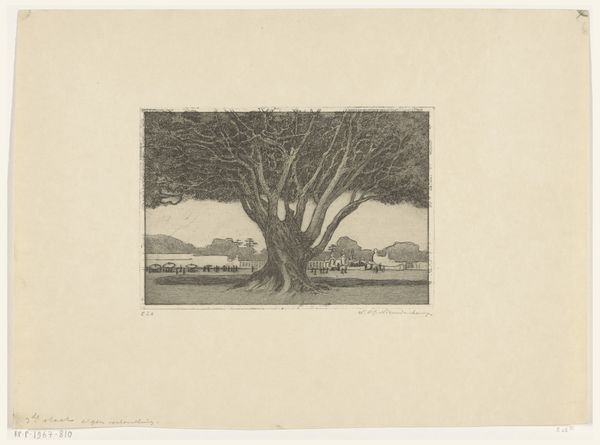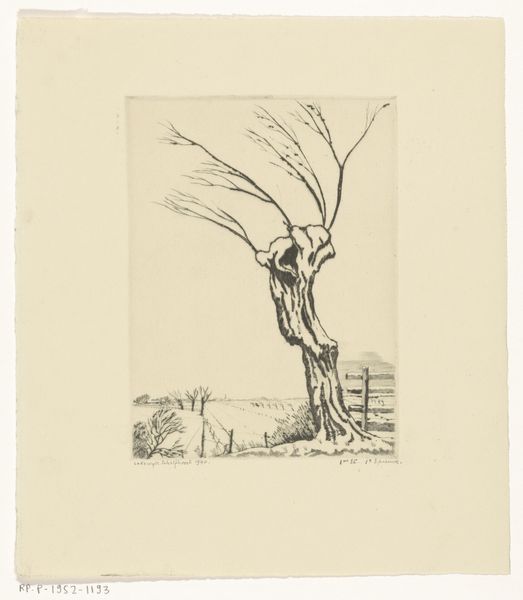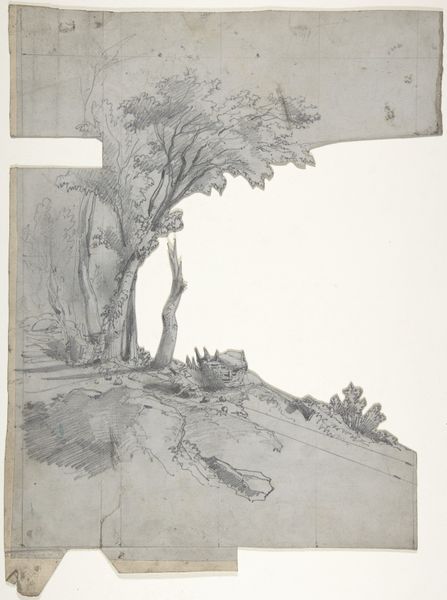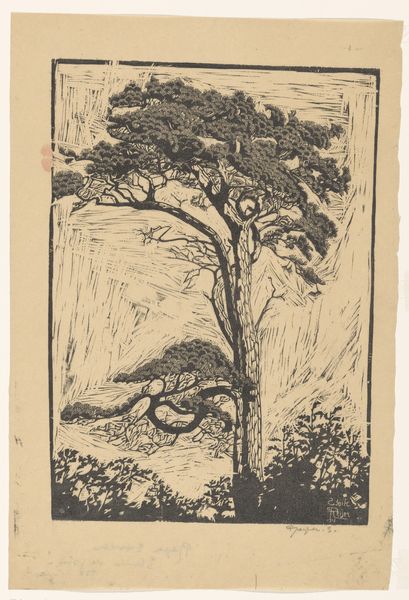
Dimensions: height 240 mm, width 253 mm
Copyright: Rijks Museum: Open Domain
Curator: This subtle yet powerful drawing in blue ink is titled "Oude pijnboom," or "Old Pine Tree." It was created by Ogata Gekko sometime between 1900 and 1910. What strikes you initially about it? Editor: Its melancholy is immediately apparent. The monochrome palette enhances a somber mood, portraying the pine not just as a tree, but as an enduring witness. The lean and tilted posture—suggests resilience despite hardship. Curator: Precisely. Consider how Gekko uses line here. There's an almost calligraphic quality in the rendering of the branches—economical yet precise, evoking a sense of the tree's age and the elements it has weathered. We must observe his employment of space, particularly how it enhances the symbolic loneliness. Editor: It's the Shinto symbolism that interests me. The shimenawa—the rope with paper streamers—adorning the tree marks this pine as sacred. It isn’t merely an old tree, it's a kami, a spirit of nature worthy of reverence. Curator: Note the strategic placement of that shimenawa, its whiteness against the ink, serving as a pivotal point in the composition. It emphasizes the central curvature of the trunk, the deviation of the line, if you will. Editor: Deviation towards the sea in the background and the passing birds, representing longevity, perhaps. Even the small, seemingly incidental structures on the lower-right draw one's focus back to civilization and spiritual life coexisting—a poignant reflection of humanity's relationship with the natural world. Curator: Do you agree that it represents the endurance of this tree despite its harsh conditions? Its isolation from a forest and a clear bending into an ever-persistent wind? Editor: Without question! And this idea of an indomitable life force echoes in Shinto beliefs where natural features like ancient trees are imbued with spiritual significance and symbolize strength, endurance, and the sacred bond between humanity and the divine. Curator: Looking closely at Gekko's method and the essence of the line itself adds dimensions of understanding, don’t you think? Editor: Yes, each perspective informs the other, granting us deeper appreciation for how the past is always informing the present, both culturally and spiritually.
Comments
No comments
Be the first to comment and join the conversation on the ultimate creative platform.
